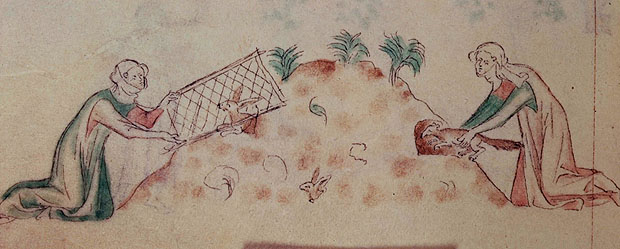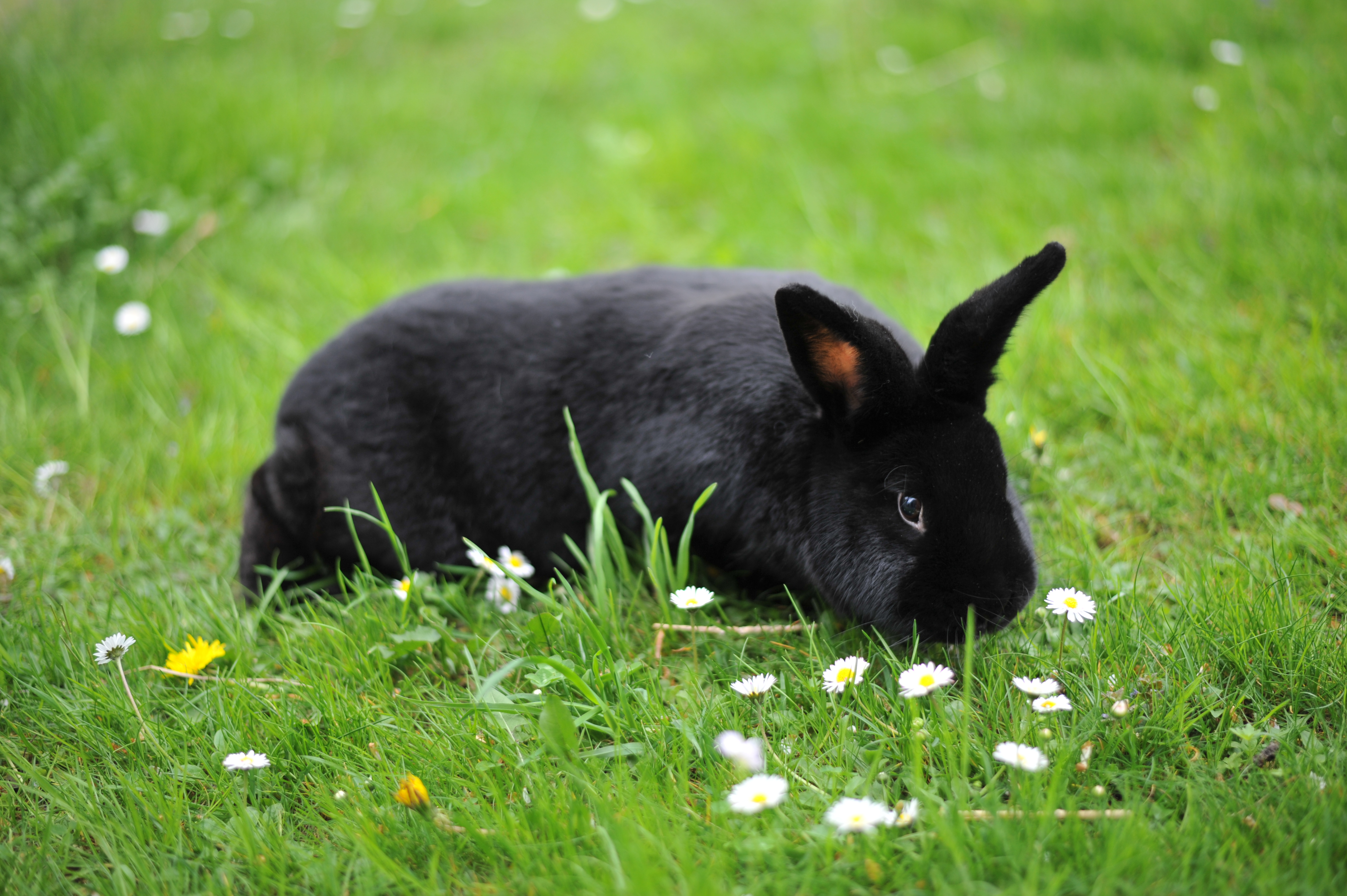|
Tri Coloured Dutch
The Tri-Colour Dutch (also known as the ''Japanese Dutch'' or ''Harlequin Dutch'') is a breed of domestic rabbit created in the Netherlands by crossing tortoiseshell Dutch rabbits with Harlequin rabbits. The Tri-Colour Dutch breed is recognized by the British Rabbit Council but not by the American Rabbit Breeders Association (although there are breeders of Harlequin Dutch rabbits in the USA). The coat of the Tri-Colour Dutch is white in the same places as a Dutch rabbit, but the coloured portions of the coat are a mix of orange with either black, blue or chocolate. Appearance The BRC Breed Standard states: 1. Body and type - Body is cobby, head held well between shoulders, which are firm and well muscled. Ears strong, well carried, length not to exceed 10 cm (4 inch). Chest wide and well formed. Front feet medium length—Straight and fairly fine bone. Back feet held parallel to body. Pattern on head - Cheeks well rounded must not touch whisker bed or corners of mouth o ... [...More Info...] [...Related Items...] OR: [Wikipedia] [Google] [Baidu] |
Domestic Rabbit
A domestic or domesticated rabbit (''Oryctolagus cuniculus domesticus'')—more commonly known as a pet rabbit, bunny, bun, or bunny rabbit—is a subspecies of European rabbit, a member of the lagomorph family. A male rabbit is known as a ''buck,'' a female is a ''doe,'' and a young rabbit is a ''kit'', or ''kitten''. Rabbits were first used for their food and fur by the Romans, and have been kept as pets in Western nations since the 19th century. Rabbits can be housed in exercise pens, but free roaming without any boundaries in a rabbit-proofed space has become popularized on social media in recent years. Beginning in the 1980s, the idea of the domestic rabbit as a house companion, a so-called ''house rabbit'' similar to a house cat, was promoted. Rabbits can be litter box-trained and taught to come when called, but they require exercise and can damage a house that has not been "rabbit proofed" based on their innate need to chew. Accidental interactions between pet rabbits ... [...More Info...] [...Related Items...] OR: [Wikipedia] [Google] [Baidu] |
Netherlands
) , anthem = ( en, "William of Nassau") , image_map = , map_caption = , subdivision_type = Sovereign state , subdivision_name = Kingdom of the Netherlands , established_title = Before independence , established_date = Spanish Netherlands , established_title2 = Act of Abjuration , established_date2 = 26 July 1581 , established_title3 = Peace of Münster , established_date3 = 30 January 1648 , established_title4 = Kingdom established , established_date4 = 16 March 1815 , established_title5 = Liberation Day (Netherlands), Liberation Day , established_date5 = 5 May 1945 , established_title6 = Charter for the Kingdom of the Netherlands, Kingdom Charter , established_date6 = 15 December 1954 , established_title7 = Dissolution of the Netherlands Antilles, Caribbean reorganisation , established_date7 = 10 October 2010 , official_languages = Dutch language, Dutch , languages_type = Regional languages , languages_sub = yes , languages = , languages2_type = Reco ... [...More Info...] [...Related Items...] OR: [Wikipedia] [Google] [Baidu] |
Dutch Rabbit
The Dutch rabbit, also known as Hollander or Brabander is easily identifiable by its characteristic colour pattern, and was once the most popular of all rabbit breeds. However, after dwarf rabbits were developed, the popularity of the Dutch rabbit dwindled. Nevertheless, the Dutch rabbit remains one of the top ten most popular breeds worldwide. "Although the name suggests that the Dutch rabbit is from the Netherlands, it was actually developed in England. During the 1830s rabbits were imported to England from Ostend in Belgium every week for the meat market. Amongst these rabbits was a breed known as the Petit Brabançon, as it originated from Brabant in Flanders. The Petit Brabançon may still be found in paintings from the fifteenth century. The Dutch rabbit has its genetic roots in this old breed. The Petit Brabançon would often display Dutch markings, and breeders in England selected those with even markings, fixing those markings into the breed we know today." Dutch are po ... [...More Info...] [...Related Items...] OR: [Wikipedia] [Google] [Baidu] |
Harlequin Rabbit
The Harlequin is a colourful breed of rabbit originating from France. It is a breed based around the coloration and markings, rather than fur and body type. The ideal weight of a standard Harlequin is 6.5-9.5 lb (2–3 kg), with bucks (males) weighing 6.5-9 lb, and does (females) weighing 7-9.5 lb. Description The traditional Harlequin is part black or some other colour (no silvering) and part white or orange (the brighter the better). It should have an even mix of both colours and ideally have a half-and-half colouration on the head. The orange color is known as ''Japanese.'' Their colouration (not the name of the breed) may also be called ''magpie'' where the second colour is white rather than orange. The recognized Japanese colours are: *Black *Blue *Chocolate (brown) *Lilac The magpie variants are, naturally: *Black *Blue *Chocolate (brown) *Lilac It is recognized by both the British Rabbit Council and American Rabbit Breeders' Association. The Harlequin rabbit i ... [...More Info...] [...Related Items...] OR: [Wikipedia] [Google] [Baidu] |
British Rabbit Council
The British Rabbit Council (BRC) is an organisation for rabbit enthusiasts in the United Kingdom. Rabbits are the UK's third most popular pet. History The British Rabbit Council was formed in 1934 when the British Rabbit Society and the National Rabbit Council of Great Britain and her Dominions merged. Recognised breeds There are over 50 breeds recognised by the British Rabbit Council and over 500 varieties. These are divided into four groups – Fancy, Lop, Normal Fur, Rex. Structure To enter most rabbit shows, participants must be Council members and their rabbits must have a metal ring around one hind leg registered in their name. In breed classes, the rabbits are judged to a standard. See also * American Rabbit Breeders Association * List of rabbit breeds As of 2017, there were at least 305 breeds of domestic rabbit in 70 countries around the world. A rabbit breed is a distinct variety created through selective breeding (or occasionally natural selection) for specific ... [...More Info...] [...Related Items...] OR: [Wikipedia] [Google] [Baidu] |
American Rabbit Breeders Association
The American Rabbit Breeders Association (ARBA) is a national club for domestic rabbit and cavy breeders. The ARBA is headquartered in Knox, Pennsylvania in the United States. Its membership is composed of rabbit and cavy breeders throughout, fanciers, and pet owners in North America and many countries throughout the world. The ARBA serves to promote the domestic rabbit and cavy fancy, as well as commercial rabbit production. The American Rabbit Breeders Association sets official breed standards for recognized rabbit breeds and cavy breeds. Every five years the ARBA publishes a detailed guide entitled ''Standard of Perfection''. This guide is beneficial to rabbit and cavy (guinea pig) breeders, providing a reference to those interested in understanding the conformation standard for the variety of breeds recognized by the ARBA. ARBA recognizes 50 breeds of rabbit and 13 cavy breeds. Rabbit shows The ARBA sanctions rabbit shows throughout the year, all over the USA and Canada. ... [...More Info...] [...Related Items...] OR: [Wikipedia] [Google] [Baidu] |
List Of Rabbit Breeds
As of 2017, there were at least 305 breeds of domestic rabbit in 70 countries around the world. A rabbit breed is a distinct variety created through selective breeding (or occasionally natural selection) for specific characteristics, including size, fur (length, quality, or color), feed conversion ratio, climate adaptability, or temperament. Groups such as the American Rabbit Breeders Association (ARBA) and the British Rabbit Council (BRC) coordinate and standardize the desired qualities of their recognized breeds, through promotion and exhibition. Each rabbit breed is considered to benefit when a reputable breeder strives to emulate the purpose for the breed, often defined by the individual breed standard by which it may be judged. The global diversity of breeds reflects the breadth of the rabbit's unique qualities. Listed below are 191 of the world's modern-day rabbit breeds. Modern-day rabbit breeds * indicates "Rabbits in COUNTRY or TERRITORY" links. Scope The tab ... [...More Info...] [...Related Items...] OR: [Wikipedia] [Google] [Baidu] |
Rabbit Breeds
As of 2017, there were at least 305 breeds of domestic rabbit in 70 countries around the world. A rabbit breed is a distinct variety created through selective breeding (or occasionally natural selection) for specific characteristics, including size, fur (length, quality, or color), feed conversion ratio, climate adaptability, or temperament. Groups such as the American Rabbit Breeders Association (ARBA) and the British Rabbit Council (BRC) coordinate and standardize the desired qualities of their recognized breeds, through promotion and exhibition. Each rabbit breed is considered to benefit when a reputable breeder strives to emulate the purpose for the breed, often defined by the individual breed standard by which it may be judged. The global diversity of breeds reflects the breadth of the rabbit's unique qualities. Listed below are 191 of the world's modern-day rabbit breeds. Modern-day rabbit breeds * indicates "Rabbits in COUNTRY or TERRITORY" links. Scope The t ... [...More Info...] [...Related Items...] OR: [Wikipedia] [Google] [Baidu] |




